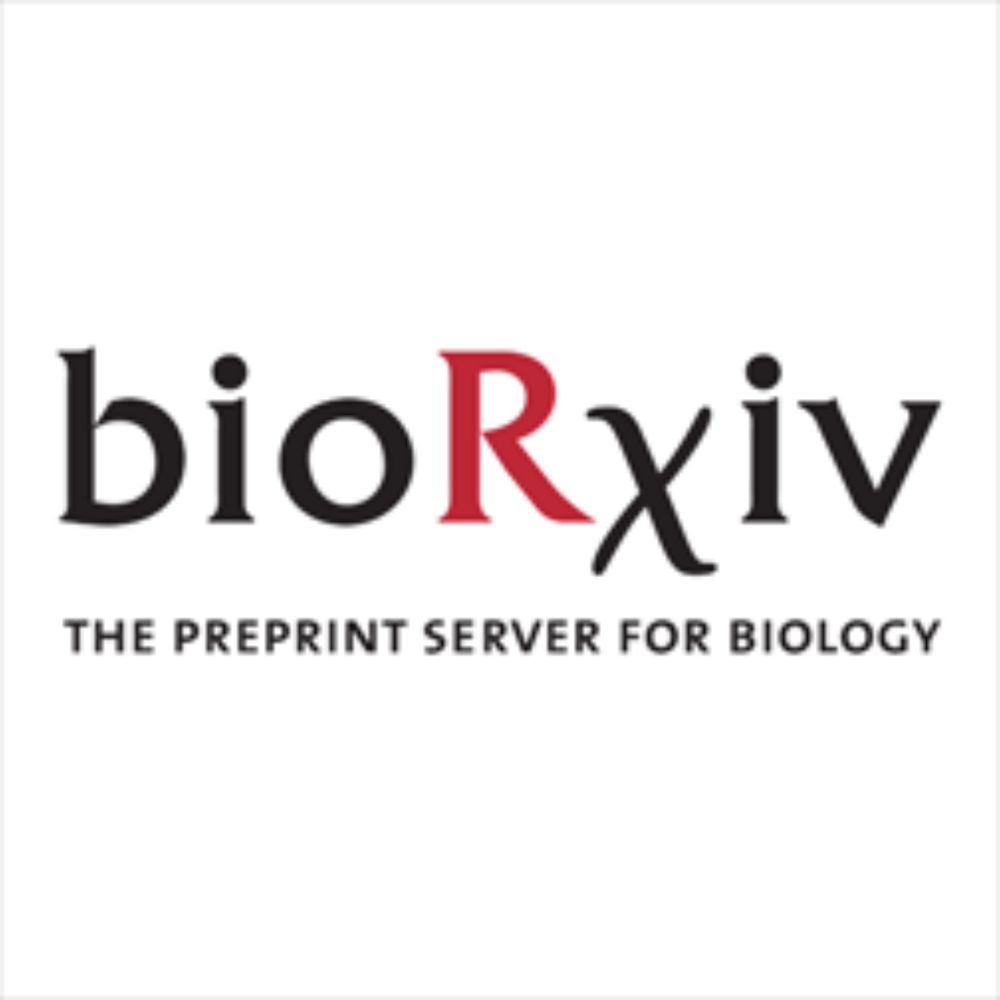
AI Surrogates and illusions of generalizability in cognitive science
Recent advances in artificial intelligence (AI) have generated enthusiasm for using AI simulations of human research participants to generate new know…
Can AI simulations of human research participants advance cognitive science? In @cp-trendscognsci.bsky.social, @lmesseri.bsky.social & I analyze this vision. We show how “AI Surrogates” entrench practices that limit the generalizability of cognitive science while aspiring to do the opposite. 1/
21.10.2025 20:24 — 👍 281 🔁 117 💬 9 📌 25
We’re recruiting a postdoctoral fellow to join our team! 🎉
I’m happy to share that I’ve opened back up the search for this position (it was temporarily closed due to funding uncertainty).
See lab page and doc below for details!
07.10.2025 02:39 — 👍 63 🔁 37 💬 2 📌 1

infant data from experiment 1

conceptual schema for different habituation models

title page

results from experiment 2 with adults
Ever wonder how habituation works? Here's our attempt to understand:
A stimulus-computable rational model of visual habituation in infants and adults doi.org/10.7554/eLif...
This is the thesis of two wonderful students: @anjiecao.bsky.social @galraz.bsky.social, w/ @rebeccasaxe.bsky.social
29.09.2025 23:38 — 👍 75 🔁 28 💬 1 📌 2

🚨New paper out w/ @gershbrain.bsky.social & @fierycushman.bsky.social from my time @Harvard!
Humans are capable of sophisticated theory of mind, but when do we use it?
We formalize & document a new cognitive shortcut: belief neglect — inferring others' preferences, as if their beliefs are correct🧵
17.09.2025 00:58 — 👍 50 🔁 16 💬 2 📌 1

Flyer for the event!
*Sharing for our department’s trainees*
🧠 Looking for insight on applying to PhD programs in psychology?
✨ Apply by Sep 25th to Stanford Psychology's 9th annual Paths to a Psychology PhD info-session/workshop to have all of your questions answered!
📝 Application: tinyurl.com/pathstophd2025
02.09.2025 20:01 — 👍 10 🔁 8 💬 0 📌 0

New Open dataset alert:
🧠 Introducing "Spacetop" – a massive multimodal fMRI dataset that bridges naturalistic and experimental neuroscience!
N = 101 x 6 hours each = 606 functional iso-hours combining movies, pain, faces, theory-of-mind and other cognitive tasks!
🧵below
04.09.2025 19:21 — 👍 115 🔁 58 💬 3 📌 3
OSF
🚨New preprint with my stellar student Junsong
A Small-World Mind Theory of social cognition doi.org/10.31234/osf...
Big network, close connection🤯
It explains why low-dimensional findings dominate & high-dimensional evidence emerges
Naturalistic designs matter to understanding the complex mind
02.09.2025 18:16 — 👍 13 🔁 3 💬 0 📌 0
Can self supervised learning help understand how the brain learns to see the world?
Our latest study, led by Josephine Raugel (FAIR, ENS), is now out:
📄 arxiv.org/pdf/2508.18226
🧵 thread below
03.09.2025 05:18 — 👍 46 🔁 12 💬 1 📌 0
Postdoctoral Associate
Job alert: I'm hiring a postdoc for my lab at CU Boulder starting Fall 2026!
We study person perception, stereotyping & prejudice, and intervention science using behavioral & neuroimaging methods.
Link: jobs.colorado.edu/jobs/JobDeta...
Review starts Nov 1 and continues until filled.
28.08.2025 16:51 — 👍 20 🔁 19 💬 0 📌 2
So cool to see our project, spearheaded by Igor Bascandziev, featured in Harvard's 'Usable Knowledge'!
27.08.2025 21:00 — 👍 5 🔁 1 💬 1 📌 0
Lazarus et al. (2025): A simple act with a lasting impact: Holding babies skin-to-skin in the NICU helped support their development and reduced differences linked to family income. Early touch can be a powerful way to promote equity from the very start #infancypapers doi.org/10.1111/infa...
31.07.2025 15:54 — 👍 15 🔁 8 💬 0 📌 1
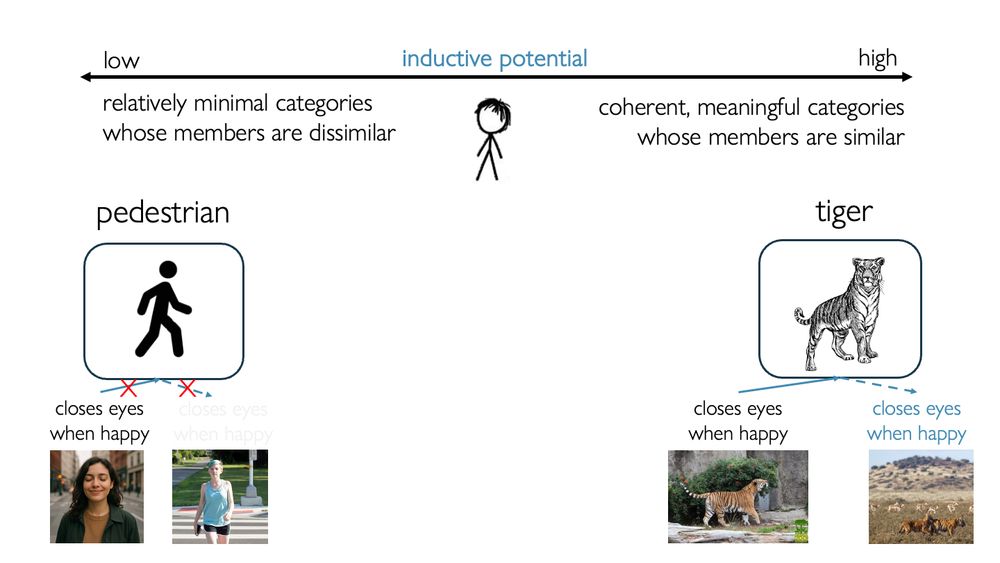
continuum of inductive potential from low (relatively minimal categories whose members are dissimilar) to high (coherent meaningful categories whose members are similar) above a cartoon child. an icon of a tiger appears under "high" inductive potential, with "closes eyes when happy" appearing as a feature of a tiger in a zoo, with an arrow pointing to the tiger icon, and a dashed arrow extending it to a tiger on a savanna. an icon of a pedestrian appears under "low" inductive potential, with "closes eyes when happy" appearing as a feature of a woman on a street, with Xs over arrows pointing to the pedestrian icon, and to a different pedestrian.
📣 new paper! people use some categories to generalize (e.g., we generalize something we learn about one tiger 🐯 to other tigers 🐅), but not others (e.g., we don't generalize from one pedestrian 🚶 to other pedestrians 🚶♂️). how do people learn what categories allow for generalization? 🧵
31.07.2025 06:10 — 👍 45 🔁 15 💬 2 📌 1
OSF
We tried very hard to study language and communication during strategic games like prisoner's dilemma. Veronica Boyce did many experiments chasing what could have been an interesting result but in the end wasn't very strong. Now she's written a nice postmortem: osf.io/preprints/ps...
28.07.2025 18:28 — 👍 20 🔁 2 💬 1 📌 0
OSF
New preprint! Led by Bill Pepe, with @brandonwoo.bsky.social and @ashleyjthomas.bsky.social. We asked if infants think helping and hindering stem from actors' dispositions (i.e. good/nice v bad/mean) or their social relationships, by testing expectations for future behavior: osf.io/preprints/ps...
17.07.2025 13:29 — 👍 19 🔁 9 💬 1 📌 0
🚨New paper! We know models learn distinct in-context learning strategies, but *why*? Why generalize instead of memorize to lower loss? And why is generalization transient?
Our work explains this & *predicts Transformer behavior throughout training* without its weights! 🧵
1/
28.06.2025 02:35 — 👍 48 🔁 7 💬 2 📌 2
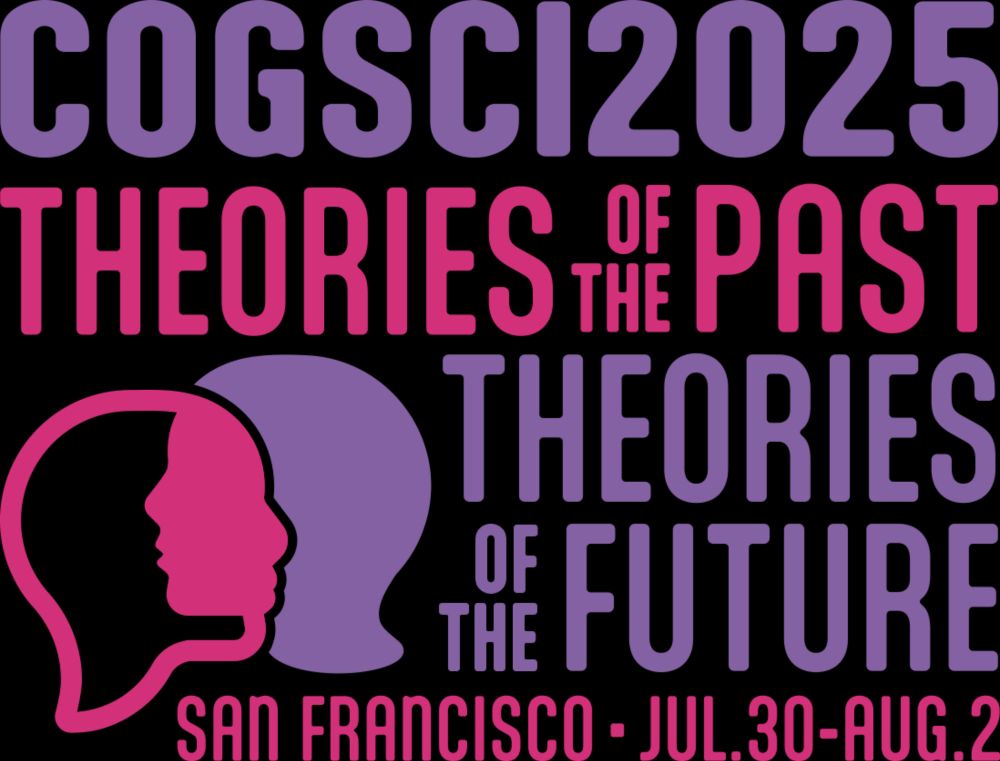
Domain Interactions | CogSci 2025
Organizers
If you are attending #CogSci2025 I hope you will consider attending our pre-conference workshop on July 29 - "Putting it Together: Interactions Between Domains of Cognition"
sites.google.com/view/cogsci2...
20.05.2025 21:18 — 👍 34 🔁 10 💬 3 📌 0

I’m happy to be at #VSS2025 and share what our lab has been up to this year!
I’m also honored to receive this year’s young investigator award and will give a short talk at the awards ceremony Monday
16.05.2025 18:12 — 👍 52 🔁 14 💬 3 📌 0
Despite everything going on, I may have funds to hire a postdoc this year 😬🤞🧑🔬 Open to a wide variety of possible projects in social and cognitive neuroscience. Get in touch if you are interested! Reposts appreciated.
09.05.2025 19:01 — 👍 131 🔁 103 💬 3 📌 5
OSF
1/
New Preprint (also my first time posting on BlueSky haha)!!!
How do individual differences in habituation shape dishabituation magnitude?
Work with Qiong Cao, @mcxfrank.bsky.social and @shariliu.bsky.social
osf.io/preprints/ps...
08.05.2025 04:03 — 👍 24 🔁 6 💬 1 📌 0
Congrats Natalia!!
02.05.2025 23:55 — 👍 1 🔁 0 💬 1 📌 0
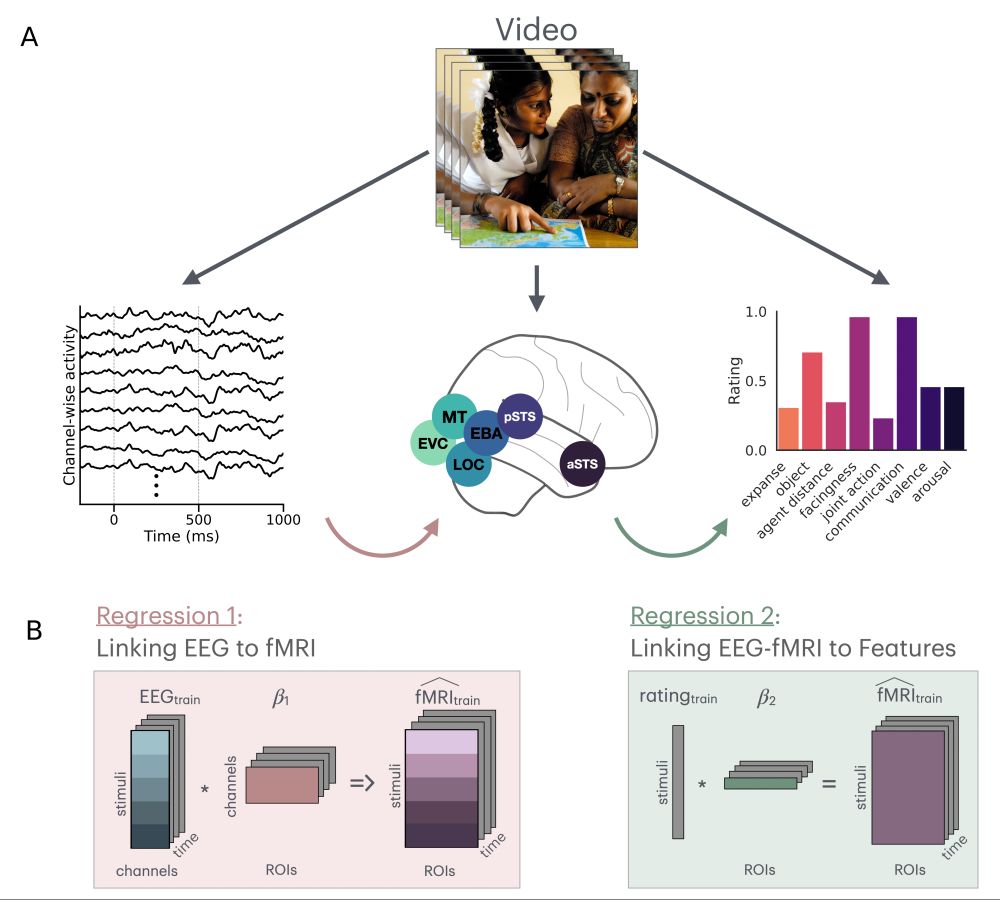
Shown is an example image that participants viewed either in EEG, fMRI, and a behavioral annotation task. There is also a schematic of a regression procedure for jointly predicting fMRI responses from stimulus features and EEG activity.
I am excited to share our recent preprint and the last paper of my PhD! Here, @imelizabeth.bsky.social, @lisik.bsky.social, Mick Bonner, and I investigate the spatiotemporal hierarchy of social interactions in the lateral visual stream using EEG-fMRI.
osf.io/preprints/ps...
#CogSci #EEG
23.04.2025 15:34 — 👍 27 🔁 9 💬 1 📌 0
my first time joining @stanfordpsypod.bsky.social as a co-host! It was super cool to talk with Kendrick. Go listen to it 🤩
10.04.2025 19:41 — 👍 4 🔁 1 💬 0 📌 0
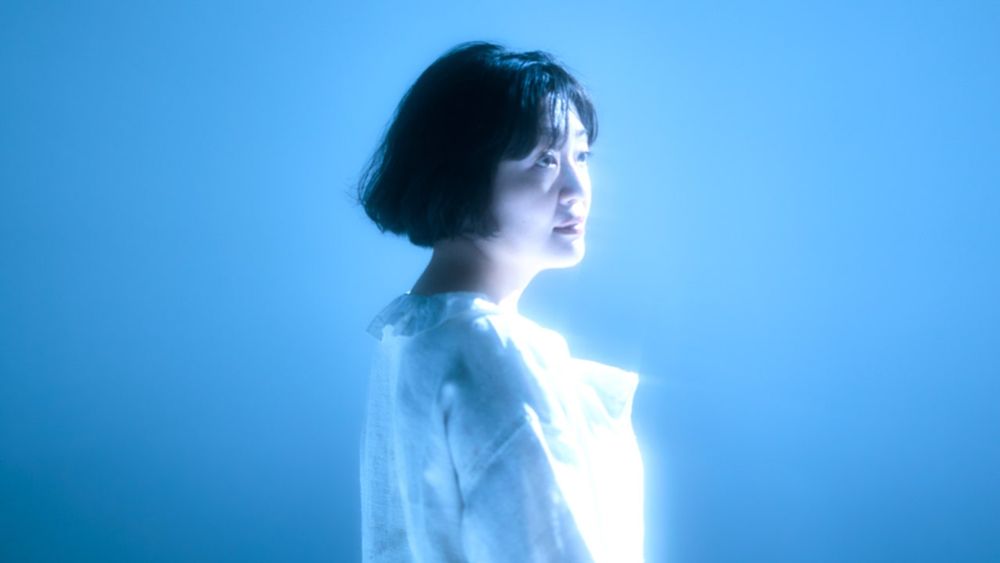
Sayaka Murata’s Alien Eye
The author of “Convenience Store Woman” has gained a cult following by seeing the ordinary world as science fiction.
Elif Batuman profiles Sayaka Murata, the best-selling author of “Convenience Store Woman,” who has gained a cult following by seeing the ordinary world as science fiction.
07.04.2025 17:10 — 👍 61 🔁 11 💬 0 📌 3
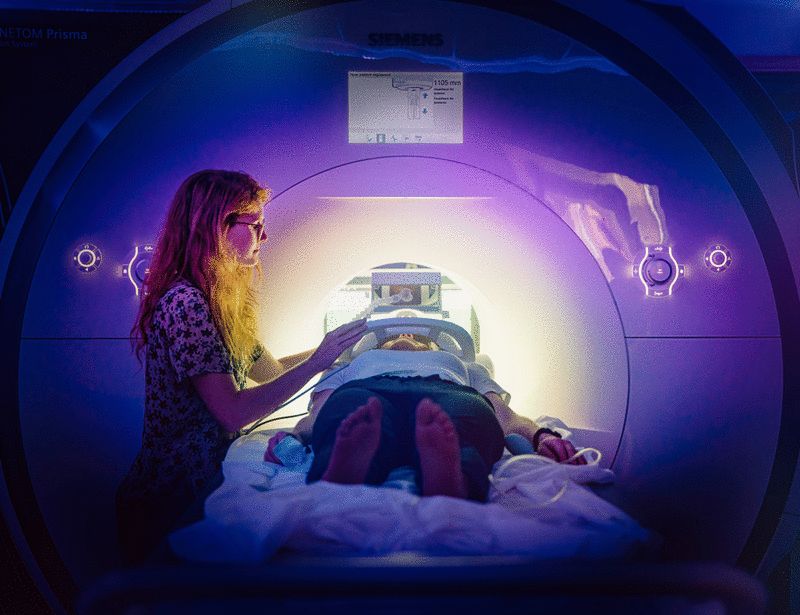
Hippocampal encoding of memories in human infants
Humans lack memories for specific events from the first few years of life. We investigated the mechanistic basis of this infantile amnesia by scanning the brains of awake infants with functional magne...
Why do we not remember being a baby? One idea is that the hippocampus, which is essential for episodic memory in adults, is too immature to form individual memories in infancy. We tested this using awake infant fMRI, new in @science.org #ScienceResearch www.science.org/doi/10.1126/...
20.03.2025 18:36 — 👍 483 🔁 165 💬 20 📌 22
neuroscientist @berkeley_ai. NIH K00 + UC Presidential Postdoctoral Fellow. he/him
Cognitive Computational Neuroscientist in Training
Neuro + ML PhD @ CMU'29 | BS in Math and in CS @ MIT' 23 & MEng' 24
@Penn Prof, deep learning, brains, #causality, rigor, http://neuromatch.io, Transdisciplinary optimist, Dad, Loves outdoors, 🦖 , c4r.io
Postdoc @Stanford. Brain Development and Education Lab. Tired mom. Bookworm. Language and brain development, developmental neuroimaging, cognitive neuroscience.
PhD @Stanford studying cognitive science & AI
Prev: Pre-doc Fellow @Harvard, Econ & CS research with Paul Romer, Stats & ML @UniofOxford, Econ @Columbia
Developmental psychologist. Nerding out about language & brain development, and the reproduction of inequity. Assistant Professor at Stanford GSE
🇳🇱 | PhD from Columbia | Digital Nomading for a bit | How places and changes influence social cognition and well-being | Social Data Science
phd student at stanford. developmental cognitive neuroscience. visual perception. infant fmri. she/her.
PINE Lab PI @ Northeastern, HAPPE EEG software creator, neuroscientist exploring how experiences shape brain & behavior development. Loves cheese. She/her
https://www.plasticityinneurodevelopmentlab.com/
https://github.com/PINE-Lab/HAPPE
** searching for fall 2026 postdoc **
Science — how do early experiences shape emotional development & regulation? 🧠
Democracy — how do emotion regulation/co-regulation support our highest ideals (freedom, justice, peace, etc)? 🌈
ellencroche.com
Assistant Professor at University of Iowa, Cognitive Neuroscientist
www.hunterschone.com
Assistive technologies and neuroplasticity | NIH BRAIN Initiative postdoctoral fellow in the Collinger lab at the University of Pittsburgh | Prev: UCL and NIMHgov | 🏳️🌈
PhD student from CIMeC, University of Trento. Interested in computational cognitive neuroscience and Machine learning. tlmnhut.github.io
Cognitive computational neuroscience, machine learning, psychophysics & consciousness.
Currently Professor at Freie Universität Berlin, also affiliated with the Bernstein Center for Computational Neuroscience.
assistant professor UW Madison psych | studies neurodevelopment, emotion regulation, and decision-making | dumpster diving for psychic retrieval | views expressed my own
Computational cognition. Vision. Working memory.
Our mission of discovery and learning is energized by a spirit of optimism and possibility that dates to our founding.
Second-year Psych PhD at Stanford in the Causality in Cognition Lab!
Research Professional @stanfordpsych LangCog Lab🧠
Stanford ‘22🌲 · Context & Cognition · Adaptations in Early Learning · #FirstGen, 🏳️🌈, he/him rbzsparks.github.io
PhD Candidate, Psychological & Brain Sciences, Johns Hopkins University
concepts | language | plasticity | development | neuroscience
https://m-hauptman.github.io/













